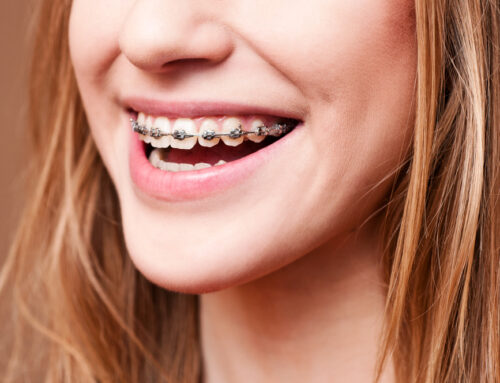Teeth crowding is a common issue, often attributed to genetic factors and natural growth processes. However, what’s less widely acknowledged is the role that poor dental care can play in exacerbating this condition. While not a direct cause, inadequate oral hygiene can set off a chain of events that may contribute to the crowding of teeth, especially in children. This blog aims to explore these often-overlooked connections and underline the importance of good dental practices.
The Domino Effect of Neglected Oral Hygiene
When oral hygiene starts to take a turn for the worse, things tend to snowball into a a progression trend causing further problems ahead. Once plaque begins to in your gums, it doesn’t just leave everything else alone. In fact there are several things to watch out for when oral hygiene isn’t kept up with consistently.
1. Early Tooth Loss and its Repercussions
- One of the more immediate consequences of poor dental care is tooth decay and gum disease, potentially leading to premature tooth loss. When a primary tooth is lost earlier than the normal shedding schedule, it disrupts the space in the jaw that would be occupied by an emerging permanent tooth. Adjacent teeth might drift or tilt into the vacant space, leaving less room for other teeth to erupt properly, thus contributing to crowding.
2. Impact of Gum Disease on Jawbone and Teeth Alignment
- Advanced gum disease, or periodontitis, doesn’t just threaten the health of your gums; it can also lead to jawbone deterioration. Changes in the jawbone structure can alter the way teeth fit together, potentially leading to or exacerbating existing crowding.
3. Complications from Impacted Teeth
- Poor dental hygiene can increase the risk of developing cavities which might lead to more severe dental issues, such as impacted teeth. An impacted tooth, which fails to emerge in the correct position, can push adjacent teeth out of alignment, further contributing to crowding.
4. The Role of Dental Decay in Developmental Disturbances
- Consistent exposure to high sugar levels, coupled with inadequate oral hygiene, can negatively impact the development of a child’s teeth and jaws. This can potentially lead to misalignments, including crowding, as the teeth and jaw structure may not develop optimally.
Preventive Measures and Orthodontic Solutions for Teeth Crowding
In light of the various factors that contribute to teeth crowding, especially those stemming from poor dental hygiene, it’s imperative to focus on preventive measures and seek orthodontic solutions when necessary. Adopting proactive strategies can significantly mitigate the risk of crowding and ensure better oral health outcomes.
Importance of Regular Dental Check-ups
Routine dental visits are foundational to maintaining oral health. These check-ups are crucial for the early detection and treatment of conditions like cavities and gum disease, which, if left unaddressed, can lead to more complex problems, including teeth crowding. Regular dental appointments allow for timely intervention, preventing complications that could disrupt the alignment of teeth.

Effective Oral Hygiene Practices
The cornerstone of preventing teeth crowding is maintaining rigorous oral hygiene. Regular brushing and flossing play a vital role in reducing the risk of tooth decay and gum disease. Consistent and proper oral care acts as the first line of defense in preserving dental health and preventing conditions that could contribute to teeth crowding. This involves not just the frequency of cleaning but also the technique and the tools used.
Orthodontic Interventions
In instances where teeth crowding has already occurred, whether due to poor dental hygiene or other factors, orthodontic treatments become necessary. Solutions such as braces or aligners are highly effective in correcting misalignments. Early consultation with an orthodontist can be instrumental in determining the most appropriate course of action. Modern orthodontics offers a range of options to suit different needs and preferences, ensuring personalized and effective treatment.
Addressing Bad Habits
Prevention of teeth crowding also involves addressing certain habits, particularly in children. Habits like thumb-sucking and prolonged use of pacifiers can contribute to the misalignment of teeth. Discouraging these habits early on can play a significant role in preventing the development of dental issues that lead to crowding. This aspect of prevention often requires a combined effort from parents, pediatricians, and dental care professionals.
We Can Help Get Your Smile Back On Track
While genetics and natural development significantly influence teeth alignment, factors such as oral hygiene, regular dental care, and early orthodontic intervention play crucial roles in preventing and addressing teeth crowding. At Ahava Orthodontics in Fort Worth, we understand the importance of comprehensive dental care and are dedicated to providing our patients with the guidance and treatment necessary to maintain a healthy, well-aligned smile. If concerns about teeth crowding are on your mind, remember that proactive care and timely treatment are key to ensuring long-term oral health.




